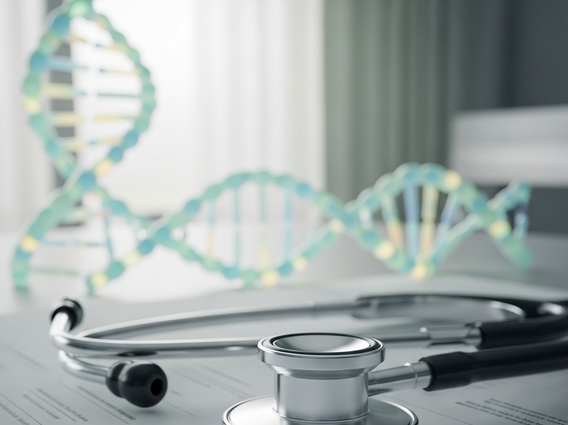Leukemia Signs & Symptoms
Leukemia, a cancer of the body’s blood-forming tissues, including the bone marrow and lymphatic system, can manifest through a variety of indicators. Recognizing these signs and symptoms early is crucial for timely diagnosis and effective treatment.

Leukemia Signs & Symptoms
Key Leukemia Symptoms
- Persistent fatigue, weakness, and pale skin are common indicators.
- Unexplained fever, frequent infections, and night sweats can be warning signs.
- Easy bruising, bleeding (nosebleeds, gum bleeding), and petechiae are often observed.
- Swollen lymph nodes, enlarged spleen or liver, and bone or joint pain may occur.
- Symptoms can vary significantly between acute and chronic types, and also among individuals.
What are the Common Leukemia Signs & Symptoms?
Understanding the signs of leukemia is the first step toward early detection. Leukemia symptoms often arise from the bone marrow’s inability to produce enough healthy blood cells, leading to deficiencies in red blood cells, white blood cells, and platelets. These common signs of leukemia can affect various bodily functions.
Common physical signs of leukemia
Many individuals with leukemia experience a range of physical changes that can be noticeable. These are often the direct result of the cancerous cells crowding out healthy blood cells in the bone marrow.
- Persistent Fatigue and Weakness: One of the most frequently reported leukemia symptoms, often due to anemia (low red blood cell count).
- Pale Skin: Another sign of anemia, where the skin loses its healthy color.
- Easy Bruising or Bleeding: Low platelet counts can lead to unexplained bruises, frequent nosebleeds, bleeding gums, or tiny red spots on the skin (petechiae).
- Fever or Chills: Often unexplained and persistent, indicating the body’s struggle against infection or the disease itself.
- Frequent or Severe Infections: Despite an increased white blood cell count, these cells are often abnormal and cannot fight infections effectively.
- Unexplained Weight Loss: A significant and unintentional drop in body weight can be a symptom of many cancers, including leukemia.
General signs of leukemia to watch for
Beyond the immediate physical manifestations, there are broader systemic indicators that can point towards the presence of leukemia. These general signs of leukemia require attention, especially if they persist or worsen over time.
- Swollen Lymph Nodes: Often painless, these can appear in the neck, armpit, or groin.
- Enlarged Spleen or Liver: This can cause abdominal discomfort, a feeling of fullness after eating only a small amount, or pain below the ribs.
- Bone or Joint Pain: Caused by the accumulation of leukemia cells in the bone marrow or near joints.
- Night Sweats: Excessive sweating during sleep, often soaking through clothes.
- Loss of Appetite: Can contribute to unexplained weight loss and general malaise.
Early Warning Signs of Leukemia to Recognize
Catching leukemia in its initial stages can significantly impact treatment outcomes. The early warning signs of leukemia can sometimes be subtle and easily mistaken for less serious conditions, making awareness crucial.
Subtle early warning signs of leukemia
Sometimes, the initial indicators of leukemia are not dramatic but rather a collection of mild, persistent symptoms that don’t seem to go away. These subtle changes can be the body’s first signals that something is amiss.
- Mild, persistent fatigue that doesn’t improve with rest.
- Frequent, low-grade fevers without an obvious cause.
- Increased susceptibility to common infections (e.g., colds, flu) that last longer than usual.
- Unexplained aches or a general feeling of malaise.
- Slightly swollen lymph nodes that are not painful.
Recognizing initial leukemia symptoms
The key to recognizing initial leukemia symptoms is paying attention to your body and noting any changes that are unusual or persistent. While these symptoms can be caused by many other conditions, their combination or persistence warrants medical evaluation. Learning how to recognize leukemia symptoms involves being vigilant about your overall health and not dismissing ongoing issues.
For instance, if you find yourself unusually tired for weeks, coupled with unexplained bruising or frequent minor infections, it’s a signal to consult a healthcare professional. These symptoms, when grouped, can provide a clearer picture than any single symptom alone.
Leukemia Symptoms by Type: Acute vs. Chronic
Leukemia is broadly categorized into acute and chronic forms, and the presentation of leukemia symptoms by type can differ significantly. Understanding these differences is vital for both diagnosis and patient education.
Acute leukemia symptoms and signs
Acute leukemia progresses rapidly, with symptoms appearing suddenly and often severely. This is due to the rapid proliferation of immature blood cells (blasts) that quickly crowd out healthy cells in the bone marrow and bloodstream.
- Sudden Onset: Symptoms develop quickly, often over days or weeks.
- Severe Fatigue and Weakness: More pronounced due to severe anemia.
- High Fever: Often accompanied by chills and night sweats.
- Frequent Infections: Due to a severe lack of functional white blood cells.
- Significant Bleeding and Bruising: Including petechiae, nosebleeds, and gum bleeding, often more severe than in chronic forms.
- Bone and Joint Pain: Can be intense due to rapid cell growth in the marrow.
- Swollen Lymph Nodes, Spleen, or Liver: Often more noticeable and rapid in development.
Chronic leukemia symptoms explained
Chronic leukemia, in contrast, progresses slowly. Many individuals with chronic leukemia may not experience any symptoms in the early stages and are often diagnosed during routine blood tests. When symptoms do appear, they are typically milder and develop gradually over months or even years.
The table below highlights the key distinctions in how symptoms manifest between acute and chronic leukemia types:
| Symptom Category | Acute Leukemia | Chronic Leukemia |
|---|---|---|
| Onset | Rapid, sudden (days to weeks) | Gradual, subtle (months to years) |
| Severity of Symptoms | Severe, pronounced | Mild or none initially, slowly worsening |
| Common Signs | High fever, severe fatigue, frequent infections, significant bleeding/bruising, intense bone pain | Often asymptomatic, mild fatigue, enlarged spleen/lymph nodes, night sweats, weight loss |
| Progression | Rapidly worsening, requires immediate treatment | Slow, can take years to progress, sometimes managed with watchful waiting |
Understanding these differences is crucial for both diagnosis and treatment planning, as the approach to managing acute and chronic leukemia varies significantly.
Specific Leukemia Symptoms in Adults
While many leukemia symptoms are universal, there are certain considerations when looking at symptoms of leukemia in adults. Age can influence both the type of leukemia most common and how symptoms are perceived or attributed.
Common signs of leukemia in adults
Adults often present with a range of symptoms that can sometimes be mistaken for other age-related conditions or general fatigue. However, the persistence and combination of these common signs of leukemia in adults should prompt medical consultation.
- Persistent Fatigue: Often more pronounced and less responsive to rest compared to normal tiredness.
- Recurrent Infections: Such as pneumonia, urinary tract infections, or skin infections that are difficult to clear.
- Unexplained Bruising or Bleeding: Especially if it occurs without injury or is more severe than expected.
- Swollen Lymph Nodes: Particularly if they are painless and persist for several weeks.
- Night Sweats and Weight Loss: These “B symptoms” are common across many cancers, including leukemia.
Unique leukemia symptoms in older adults
In older adults, leukemia symptoms can sometimes be more subtle or atypical, making diagnosis challenging. Symptoms might be masked by existing chronic conditions or simply attributed to the aging process. For example, fatigue might be dismissed as a normal part of aging, or bone pain attributed to arthritis.
It’s important for older adults and their caregivers to be particularly vigilant about new or worsening symptoms, even if they seem mild. A comprehensive evaluation by a doctor is essential to differentiate leukemia symptoms from other health issues, ensuring that potential signs of leukemia are not overlooked.
How to Recognize Leukemia Signs & When to Act
Knowing how to recognize leukemia symptoms is a critical step in seeking timely medical care. While many symptoms can overlap with less serious conditions, understanding when to be concerned can make a significant difference.
Recognizing concerning leukemia symptoms
It’s not just the presence of a symptom, but its characteristics and context that should raise concern. Pay attention to symptoms that are:
- Persistent: They don’t go away or improve over time.
- Worsening: They become more severe or frequent.
- Unexplained: There’s no obvious reason for their occurrence (e.g., bruising without injury).
- Multiple: Several symptoms occur together, forming a pattern.
- Impactful: They significantly affect your daily activities or quality of life.
For example, a single nosebleed might not be alarming, but recurrent nosebleeds combined with unusual fatigue and easy bruising should prompt immediate medical attention. This combination of signs of leukemia is often more indicative than isolated incidents.
When to consult a doctor for signs of leukemia
If you or a loved one experience any of the persistent or concerning leukemia symptoms discussed, it is imperative to consult a doctor without delay. Early diagnosis is key to effective treatment. Do not wait for symptoms to become severe before seeking professional medical advice.
Your doctor will likely start with a physical examination and blood tests, such as a complete blood count (CBC), which can reveal abnormalities in the number and type of blood cells. Further tests, like a bone marrow biopsy, may be necessary to confirm a diagnosis.
A Checklist of Leukemia Symptoms
To help consolidate the information, here is a comprehensive leukemia symptoms checklist. This list can serve as a quick reference for individuals concerned about potential indicators of the disease.
Your leukemia symptoms checklist
Reviewing this list can help you identify if you are experiencing a combination of symptoms that warrant a discussion with your healthcare provider. Remember, the presence of one or two symptoms does not necessarily mean you have leukemia, but multiple or persistent symptoms should always be evaluated.
- ☐ Persistent fatigue or weakness
- ☐ Pale skin or pallor
- ☐ Easy bruising or bleeding (e.g., nosebleeds, gum bleeding, petechiae)
- ☐ Unexplained fever or chills
- ☐ Frequent or severe infections
- ☐ Unexplained weight loss
- ☐ Swollen lymph nodes (neck, armpit, groin)
- ☐ Enlarged spleen or liver (abdominal discomfort, fullness)
- ☐ Bone or joint pain
- ☐ Night sweats
- ☐ Shortness of breath
- ☐ Loss of appetite
Summarizing key signs of leukemia
In summary, the key signs of leukemia often stem from the bone marrow’s inability to produce healthy blood cells. This leads to anemia (fatigue, paleness), thrombocytopenia (bruising, bleeding), and leukopenia (infections, fever). Additionally, the accumulation of abnormal cells can cause organ enlargement and pain. If you check off several items on this leukemia symptoms checklist, particularly if they are persistent and worsening, it is crucial to seek medical evaluation promptly.
Early detection and diagnosis are paramount for effective management of leukemia. Do not hesitate to discuss any concerns with your doctor.
Frequently Asked Questions About Leukemia Symptoms
What causes leukemia?
Leukemia is caused by mutations in the DNA of blood-forming cells, most often white blood cells. These mutations cause the cells to grow and divide uncontrollably, forming abnormal, immature blood cells that do not function properly. These abnormal cells then crowd out healthy blood cells in the bone marrow, leading to the various symptoms of leukemia. The exact reasons for these genetic mutations are often unknown, though certain risk factors like exposure to radiation, certain chemicals, or a family history can increase the likelihood.
Are leukemia symptoms always obvious?
No, leukemia symptoms are not always obvious. Especially in the early stages of chronic leukemia, individuals may experience no symptoms at all, or only very subtle ones that are easily dismissed or attributed to other common ailments like fatigue or stress. Symptoms can also vary widely in severity depending on the type of leukemia, the speed of its progression, and the individual’s overall health. This is why routine check-ups and blood tests can sometimes detect leukemia before noticeable symptoms appear.
Can children get leukemia, and are their symptoms different?
Yes, children can get leukemia, and it is the most common cancer in children and adolescents. While many symptoms overlap with those seen in adults, some differences might be observed. Children might present with more pronounced bone or joint pain, irritability, loss of appetite leading to weight loss, and swelling in the abdomen due to an enlarged spleen or liver. Persistent fever, easy bruising, and fatigue are also common. Parents and caregivers should be vigilant about any unexplained or persistent symptoms in children and seek medical advice.
How is leukemia diagnosed?
Leukemia is typically diagnosed through a series of tests. It often begins with a complete blood count (CBC), which can reveal abnormal levels of white blood cells, red blood cells, or platelets. If the CBC is abnormal, a doctor will usually recommend a bone marrow biopsy and aspiration. During this procedure, a small sample of bone marrow is taken, usually from the hip bone, and examined under a microscope to identify leukemia cells. Genetic tests on the blood or bone marrow cells can also help determine the specific type of leukemia and guide treatment.
Is fatigue a common sign of leukemia?
Yes, fatigue is one of the most common and often earliest signs of leukemia. This persistent and overwhelming tiredness is typically caused by anemia, a condition where the body lacks enough healthy red blood cells to carry adequate oxygen to the body’s tissues. In leukemia, the abnormal white blood cells crowd out the healthy red blood cell-producing cells in the bone marrow, leading to anemia. This fatigue often doesn’t improve with rest and can significantly impact a person’s daily activities.






